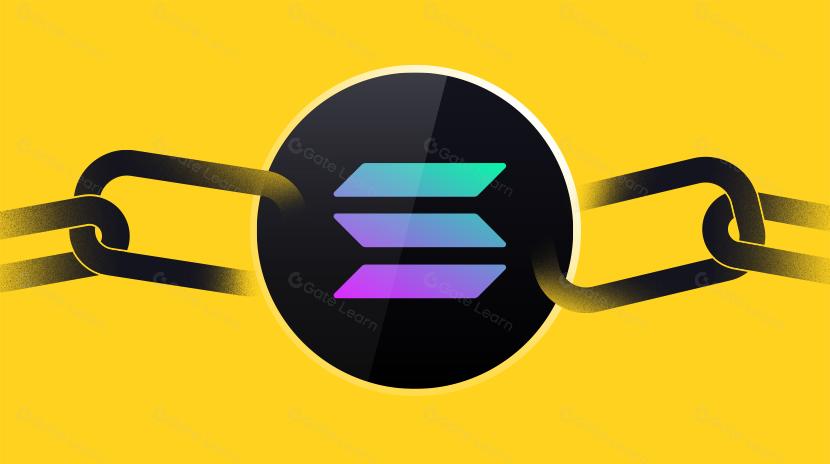什麼是 Heima?關於 HEI 的你必需知道的一切信息
Heima (HEI) 是一個基於區塊鏈的生態系統,專注於去中心化身份、安全數據存儲和 AI 驅動的智能合約自動化。區塊鏈生態系統的增長常常受到數據碎片化、複雜的跨鏈交易和安全風險的阻礙。目前的多鏈解決方案缺乏無縫互操作性,使得資產轉移和數據管理效率低下。此外,跨鏈交易的信任度仍然有限,給用戶和開發者帶來了風險。為了解決這些挑戰,需要一個可擴展且安全的基礎設施——一個能夠實現統一數據訪問、隱私保護交易和開發者友好工具的基礎設施。通過集成先進的跨鏈技術和身份聚合,Heima (HEI) 提供了一個全面的解決方案,用於無縫的區塊鏈交互,提升去中心化網絡的安全性、效率和可用性。
什麼是Heima (HEI)?
Heima (HEI) 作為 Litentry 的繼任者出現,通過品牌重塑將其願景從去中心化身份解決方案擴展到更廣泛的多鏈基礎設施。這一轉變於 2024 年初宣佈,標誌著其戰略轉向構建一個以隱私為中心、可互操作的Web3生態系統。在保留 Litentry 的基礎服務和技術專長的同時,Heima 集成了 AI 驅動的工具、跨鏈解決方案和去中心化身份聚合,以解決數據碎片化和安全風險等關鍵區塊鏈挑戰。
Litentry 最初由 Hanwen Chen、Fei Liu 和 Han Zhao 創立,他們領導了去中心化身份解決方案的開發。在他們的領導下,該項目創建了一個安全、可互操作的框架,使用戶能夠在多個區塊鏈上驗證和管理身份。隨著區塊鏈採用率的增長,團隊認識到需要更廣泛的互操作性和增強的隱私性,從而推動了 Heima Network。
到 2024 年中期,Heima 將其基礎設施擴展到身份聚合之外,引入了 AI 驅動的預測分析、鏈抽象技術和跨鏈橋,以簡化區塊鏈交互並增強安全性。這些創新使Heima 成 為DeFi、跨鏈資產交易和去中心化身份驗證領域的關鍵參與者。
到2024年第四季度,Heima完成了其鏈抽象基礎設施,使用戶能夠連接一次即可無縫訪問所有鏈。2025 年第一季度,Heima 推出了其旗艦產品,允許用戶通過一個全能賬戶進行多鏈交易。進入2025年第二季度,該平臺將引入橋接、交換、借貸和交易服務,消除了用戶切換網絡或管理多個錢包的需求。到 2025 年第三季度,更多dApp產品將集成到 Heima Network中,最終在 2025 年第四季度實現其終極目標——實現全鏈和全意圖識別,創造一個完全互操作的 Web3 體驗。
截至 2025 年初,Heima 繼續發展其生態系統,培育社區驅動的治理模型,支持 DEX 平臺,並增強跨鏈流動性解決方案。憑藉多鏈兼容性和對用戶隱私的強烈關注,Heima (HEI) 旨在塑造去中心化身份和區塊鏈創新的未來。
Heima如何運作?平行鏈和網絡概述
Heima (HEI) 作為一個基於 Substrate、兼容 EVM 的區塊鏈運行,利用平行鏈結構提供共享安全性、互操作性和去中心化身份解決方案。平行鏈是一個獨立的Layer-1 區塊鏈,連接到中繼鏈(如 Polkadot),受益於安全的驗證器集和共享生態系統。這種架構使 Heima 能夠高效擴展,同時保持安全性和去中心化,使其成為身份聚合、隱私保護和跨鏈應用的理想基礎設施。

Heima 的平行鏈於 2022 年 7 月 4 日在其前身品牌 Litentry 下啟動,後於 2024 年更名為 Heima。與依賴自身共識機制的獨立區塊鏈不同,Heima 受益於中繼鏈的強大安全模型,降低了 51% 攻擊和網絡漏洞的風險。其異構分片模型還使每個平行鏈能夠針對特定用例進行優化,確保身份驗證、憑證發行和去中心化金融(DeFi)交互無縫運行。
Heima 平行鏈的一個關鍵組件是其可驗證憑證管理模塊(VCMP),該模塊促進了數字憑證的創建、發行、驗證和管理。這些可驗證憑證(VC)以 JSON 格式存儲,允許用戶安全地管理並有選擇地披露個人數據而不洩露隱私。VC 註冊表是一個鏈上存儲系統,確保憑證可驗證的同時保護用戶身份。它僅存儲基本元數據,如憑證的發行者、狀態和加密哈希,確保原始數據保持私密的同時仍允許驗證。
Heima 平行鏈上的身份驗證流程遵循結構化流程:
- 憑證發行 — 實體向用戶發行可驗證憑證(VC),嵌入關於發行者安全區域的證明元數據。
- 憑證轉移和展示 — 用戶可以存儲、轉移或有選擇地披露憑證,同時保持對其數據的控制。
- 憑證驗證 — 驗證者使用VC註冊表和發行者的簽名證明檢查VC的真實性,確保其未被篡改或撤銷。

來源: docs.heima.network
這種去中心化憑證系統與 Heima 的 IdentityHub(IDHub)集成,該功能提供安全存儲、認證和審計日誌記錄,進一步增強了身份管理的信任和安全性。
為了確保可擴展性和效率,Heima 的平行鏈架構採用了先進的加密技術,如零知識證明(ZKPs)和 Blake2_256 哈希,以保護用戶憑證的同時允許無信任驗證。斷言以領域特定語言(DSL)編寫,標準化數據驗證並促進自動化憑證驗證。
Heima平行鏈的另一個關鍵要素是其運行時邏輯,包括區域管理和質押機制,以確保高效的治理和網絡參與。Heima還作為身份工作者的父鏈,這是一個基於TEE的側鏈,旨在安全地聚合身份和發行憑證而不洩露隱私。該平臺抽象複雜區塊鏈交互的能力使開發者能夠構建具有更高安全性和互操作性的去中心化身份應用。
身份管理模塊(IMP)
Heima中的身份管理模塊(IMP)是一個去中心化身份框架,旨在實現安全的身份驗證、跨鏈身份鏈接和可驗證憑證管理。它在兩個不同的層中運行:一個在平行鏈上,另一個在可信執行環境(TEE)內。這種結構確保了隱私、安全和高效的身份驗證,同時保持用戶對其數據的控制。
基於平行鏈的IMP充當用戶門戶,促進身份交互而不存儲數據。所有與身份相關的交易,包括身份鏈接請求(Web2 <> Web3)、可驗證憑證發行和錢包認證,都使用用戶的屏蔽密鑰加密後再進行處理。基於TEE的IMP處理數據存儲、憑證驗證和高級隱私操作。通過在隔離且加密安全的環境中執行身份流程,Heima確保沒有外部實體(包括系統管理員)能夠訪問用戶的敏感信息。
IMP 的一個關鍵功能是其與 Heima IdentityHub(IDHub)的集成,該功能促進安全存儲、認證和身份憑證管理。該系統支持跨鏈錢包鏈接,確保用戶可以在多個區塊鏈上驗證和管理其身份而不暴露私人數據。此外,Heima 使用可驗證憑證管理模塊(VCMP)發行防篡改的數字憑證,以 JSON 格式存儲,可以根據用戶偏好有選擇地披露。
Teebag 模塊在 IMP 中的遠程認證和驗證中至關重要。它充當 SGX 區域的註冊表,確保身份驗證服務在可信的硬件環境中運行。通過利用英特爾的數據中心認證原語(DCAP)和遠程認證機制,Teebag模塊保證身份驗證過程保持安全和可驗證。
網絡概述
Heima Network 是一個基於 Substrate、兼容 EVM 的 Layer-1 區塊鏈,優先考慮隱私、互操作性和可擴展性。它從Litentry演變而來,繼承了其身份管理框架和去中心化基礎設施。通過集成鏈抽象技術,Heima 允許用戶無縫管理跨多個區塊鏈的資產和身份,無需手動切換網絡。
HEI 代幣是 Heima Network 的原生資產,通過代幣遷移機制取代LIT,使用戶能夠將其 ERC-20 LIT 代幣兌換為HEI。該網絡支持代幣轉移、質押、治理和跨鏈交互,使其成為一個多功能的區塊鏈生態系統。
Heima網絡安全和交易驗證的核心是收集者,它們在維護區塊生產和網絡穩定性中發揮關鍵作用。收集者負責聚合交易、執行智能合約並將數據傳遞到中繼鏈以完成最終確認。與傳統的驗證者不同,收集者不直接參與中繼鏈共識,而是專注於維護平行鏈操作。
Heima採用委託權益證明(DPoS)模型,允許用戶通過質押HEI代幣投票選舉收集者。收集者選擇通過五個階段的推出逐步擴大收集者集規模,以增強去中心化和網絡效率。質押者獲得網絡gas費用的30%作為獎勵,確保激勵質押生態系統。
此外,Heima提供RPC節點,作為查詢區塊鏈數據、執行交易和與智能合約交互的公共訪問點。這些非區塊生產節點使開發者和用戶能夠訪問Heima的區塊鏈基礎設施而無需運行完整節點。
通過其收集者模型、跨鏈能力和身份驗證解決方案,Heima正在構建一個安全且可互操作的區塊鏈網絡,旨在支持Web3應用、DeFi和去中心化身份解決方案。

來源: heima.network
Heima的用例
通過簡化跨鏈交易、保護敏感數據和增強用戶體驗,Heima 為 Web3 服務提供了可擴展的基礎。以下是 Heima 支持的三個關鍵用例。
- 無縫跨鏈交易: Heima通過抽象網絡複雜性並確保隱私保護交易,實現無摩擦的多鏈交易。PumpX 等平臺利用Heima的跨鏈執行層,允許用戶在不同區塊鏈上交易資產而無需切換錢包或手動管理交易。
- 去中心化身份和隱私解決方案: Heima 的身份管理框架為個人和組織提供安全、可驗證的憑證。通過利用可信執行環境(TEE),Heima 確保用戶身份驗證而不暴露個人數據。這對於 DeFi 平臺、KYC 驗證服務和數字身份管理尤為重要,因為隱私和安全性至關重要。
- 鏈上借貸和 DeFi 基礎設施: Heima 通過支持高效的多鏈資產管理,為借貸協議和去中心化金融服務提供支持。用戶可以跨多個區塊鏈借入、借出和質押資產,同時享受低交易費用和隱私增強的金融交互。平臺的基於意圖的執行模型優化了流動性提供和智能合約自動化,確保無縫、高效的 DeFi 操作。
Heima的主要功能
可驗證憑證 Solidity 合約
Heima引入了可驗證憑證 Solidity 合約,允許第三方開發者創建、驗證和管理去中心化身份。此功能支持自定義身份解決方案,其中智能合約在Heima的可信執行環境(TEE)中執行以確保隱私和安全性。開發者可以在本地測試 Solidity 合約,然後將其部署到 Heima 平行鏈上,將基於身份的驗證集成到dApp、DeFi平臺和Web3 服務中。
身份驗證流程遵循結構化流程:智能合約從公共、私有或基於區塊鏈的來源檢索身份相關數據,使用Heima的運行時邏輯驗證憑證,並返回可驗證的結果。通過利用TEE安全性,所有與身份相關的操作保持機密並免受外部操縱。此外,開發者可以在合約內調用外部API,實現實時身份驗證和憑證發行。
該系統為KYC流程、信用評分和去中心化認證提供了標準化且無需信任的機制,在保護用戶隱私的同時提升身份安全性。
代幣橋
為了促進互操作性,Heima部署了一個代幣橋,使用戶能夠在以太坊(ERC-20)和Heima Network之間轉移HEI代幣。此功能對於將LIT持有者遷移到HEI至關重要,確保平穩過渡而無需新代幣發行。
該橋由ChainBridge提供支持,這是一個由ChainSafe開發的模塊化區塊鏈橋,支持跨以太坊、Polkadot和基於Substrate的鏈的多向代幣轉移。該過程涉及在以太坊上鎖定HEI,生成證明,並在Heima Network上鑄造等量代幣。交易通過安全的中繼系統驗證,防止雙花或欺詐活動。
代幣橋允許用戶在多個生態系統之間轉移流動性,實現無縫的DeFi參與、質押和跨鏈資產管理。未來的迭代將增強橋接效率、降低交易成本並擴展對其他數字資產的支持。

來源: apps.heima.network
可信執行環境(TEE)
TEE框架確保身份相關操作的安全和保密執行,作為一個隔離的處理單元,敏感數據免受外部威脅。與所有交易公開可見的傳統區塊鏈環境不同,TEE提供基於硬件的加密以保證數據的機密執行。
Heima基於TEE的側鏈存儲用戶憑證、信用評分和Web3身份數據,確保只有授權實體才能訪問加密信息。它支持隱私保護計算,如身份聚合、風險評分和去中心化KYC驗證,而不暴露敏感個人細節。

來源: docs.heima.network
Heima的dApp
PumpX
PumpX是一個多合一的鏈上交易平臺,允許用戶跨多個區塊鏈購買和交易代幣,而無需手動進行跨鏈交易。通過利用Heima的鏈抽象技術,PumpX使用戶能夠通過單一界面執行交易,消除了切換網絡和管理多個錢包的複雜性。
通過可信執行環境(TEE),PumpX確保隱私保護的交易,保護用戶數據和交易策略。此外,其統一的投資組合管理系統使用戶能夠輕鬆重新平衡資產、質押代幣並進行高級交易操作。憑藉無摩擦且高效的用戶體驗,PumpX正在重新定義交易者與多鏈資產市場的交互方式。

來源: pumpx.ai
IdentityHub
IdentityHub是一個去中心化身份管理dApp,幫助用戶聚合和管理其跨多個區塊鏈的Web3身份。通過鏈接錢包、資產和賬戶,IdentityHub為用戶提供了一個統一的身份框架,使他們能夠驗證憑證、管理代幣持有並無縫參與社交互動。
該平臺還設有基於任務的獎勵系統,用戶可以通過每日簽到、推薦和社交媒體參與賺取積分。此外,IdentityHub跟蹤不同生態系統中的代幣持有情況,根據用戶的鏈上活動和資產所有權提供可驗證憑證。這種遊戲化和激勵的身份平臺增強了Heima內的社區參與和長期用戶參與。

來源: idhub.heima.network
Supercharged Otter
Supercharged Otter是一款Telegram迷你遊戲,將娛樂與基於區塊鏈的獎勵相結合。玩家通過簡單的點擊機制賺取積分,升級他們的水獺以解鎖各種遊戲內獎勵。作為Heima的官方吉祥物,水獺代表了生態系統內的社區參與和趣味互動。
通過參與Supercharged Otter,用戶可以在與Heima社區保持聯繫的同時獲得獎勵。這款互動dApp不僅促進了參與和留存,還作為遊戲、社交活動和區塊鏈獎勵之間的橋樑,強化了Heima對用戶友好去中心化體驗的承諾。

來源: heima.network
什麼是HEI幣?
HEI是Heima的原生代幣,用於治理、質押、交易和身份驗證。其最大供應量為1億枚,其中7045萬枚(70.45%)已在流通(2025年3月)。
最初作為ERC-20和BEP-20代幣發行,HEI已遷移到Heima平行鏈,初始供應量保持為100,000,000 HEI。為了保持其代幣經濟學,部分ERC-20 HEI將被銷燬,同時在平行鏈上鑄造等量代幣。代幣橋促進了以太坊和Heima之間的無縫遷移,確保完全互操作性。
2025年2月13日,Litentry Network正式升級為Heima,所有LIT代幣在大多數中心化交易所自動轉換為HEI。舊LIT代幣持有者可以通過Heima的交換門戶手動兌換。作為治理代幣,HEI允許用戶通過Heima治理門戶對網絡提案進行投票。它還作為交易gas,支持質押、安全和網絡維護。
HEI的分配確保了生態系統的長期可持續性,其中66.45%用於流通,24.1%用於生態系統基金,5%用於DeFi流動性儲備,3.2%用於基金會基金,1.25%用於開發團隊。生態系統錢包支持質押、流動性提供和網絡安全,而基金會錢包資助交易所上市和社區倡議。通過逐步解鎖計劃,HEI的結構旨在推動Heima生態系統內的可持續增長。

來源: heima-network.medium.com
HEI是一個好的投資嗎?
HEI在Heima Network中具有強大的實用性,作為具有多鏈互操作性的治理、質押和交易代幣。其鏈抽象技術簡化了跨鏈身份管理和資產轉移,使其成為Web3應用的寶貴基礎設施。然而,其長期成功取決於生態系統的採用——如果Heima未能吸引dApp開發者和用戶,HEI的實用性和需求可能會下降。此外,代幣解鎖計劃可能會影響市場穩定性,從而影響HEI的價格動態。
如何擁有HEI?
要擁有HEI,您可以使用中心化加密貨幣交易所的服務。首先創建一個Gate.com賬戶,完成驗證並充值資金。然後,您可以按照步驟購買HEI。
Heima的最新消息
據2025年3月14日官方Medium頻道報道,Heima Network公佈了其2025年路線圖,重點介紹了跨鏈互操作性和去中心化身份的重大進展。第一季度,Heima將完成其跨鏈交易功能並集成多鏈賬戶權限。第二季度將引入對Hyperliquid、Sui和Unichain的支持,同時推出Layer 2交易網絡。第三季度,Heima將啟動原生流動性池以增強質押獎勵。第四季度將專注於安全升級,實施自適應安全和加密強制執行,鞏固Heima作為區塊鏈互操作性領導者的地位。
立即行動
查看 HEI 今日價格,並開始交易您喜歡的貨幣對。
相關文章

Solana需要 L2 和應用程式鏈?

Sui:使用者如何利用其速度、安全性和可擴充性?

什麼是中本聰同步?您需要瞭解的有關 SSNC 的所有資訊

錯誤的鉻擴展程式竊取分析

在哪種敘事中最受歡迎的掉落?


